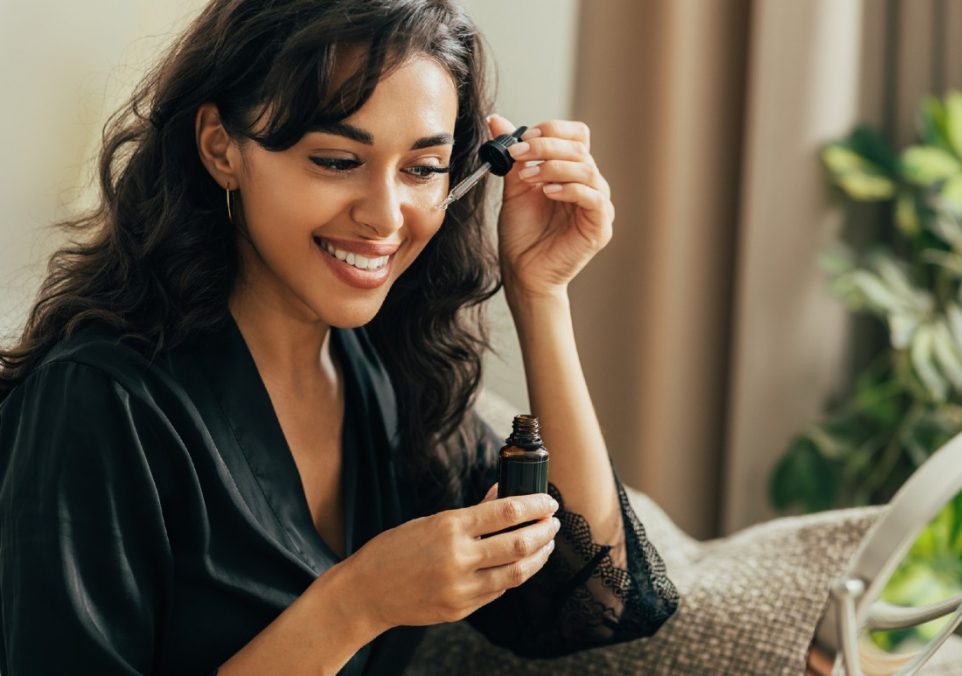Does Hyaluronic Acid Do Anything? Here’s Why Some Dermatologists Don’t Buy the Hype!

Hyaluronic acid (HA) has become a staple in many skincare routines, but it’s essential to understand what it is, its benefits, and whether it suits your skin type. Let’s look at what makes this ingredient so popular and what you need to know to use it effectively.
What is Hyaluronic Acid?
Hyaluronic acid is a naturally occurring substance found throughout the human body, especially in the skin, eyes, and connective tissues. It’s renowned for its ability to retain moisture—one molecule of hyaluronic acid can hold up to 1,000 times its weight in water. This makes it a powerful humectant, a substance that attracts water and helps to keep tissues well-lubricated and moist.
How Does Hyaluronic Acid Work?
In skincare, hyaluronic acid functions primarily as a moisturizing agent. When applied to the skin, it forms a barrier on the surface that helps to draw in and retain moisture from the environment. This process helps to keep the skin hydrated, plump, and smooth. There are various forms of hyaluronic acid used in skincare products, differentiated by their molecular weight:
- High Molecular Weight HA: Sits on the surface of the skin and provides immediate hydration and a plumping effect.
- Low Molecular Weight HA: Penetrates deeper into the skin, offering more prolonged hydration and potential anti-aging benefits.
Despite its benefits, it’s important to note that hyaluronic acid cannot penetrate the deeper dermal layers of the skin effectively when applied topically. Most of its benefits are confined to the surface or the upper layers of the skin.
View this post on Instagram
Benefits of Hyaluronic Acid
- Intense Hydration: Hyaluronic acid draws moisture from the air into the skin, helping to keep it hydrated. This is particularly beneficial in maintaining skin elasticity and firmness.
- Plumping Effect: By increasing the moisture content of the skin, hyaluronic acid can smooth out fine lines and wrinkles, making the skin appear more youthful.
- Improved Skin Texture: Regular use of hyaluronic acid can improve the overall texture of the skin, making it feel softer and smoother.
- Enhanced Healing: Hyaluronic acid aids in wound healing and can help reduce inflammation and redness, making it a useful ingredient for those with sensitive or acne-prone skin.
How To Use Hyaluronic Acid
To maximize the benefits of hyaluronic acid in your skincare routine, follow these steps:
- Cleanse: Start with a clean face. Use a gentle cleanser to remove any dirt, oil, or makeup.
- Apply to Damp Skin: Hyaluronic acid works best when applied to slightly damp skin. After cleansing, lightly mist your face with water or leave it slightly damp.
- Use a Serum: Apply a few drops of a hyaluronic acid serum to your face. Pat it gently into your skin rather than rubbing it in.
- Follow with a Moisturizer: To lock in the moisture attracted by the hyaluronic acid, follow up with a moisturizer. This step is crucial, especially in dry climates, as it prevents the moisture from evaporating.
- Seal with Sunscreen (Morning Routine): If you’re using hyaluronic acid in the morning, always follow with a broad-spectrum sunscreen to protect your skin from UV damage.
View this post on Instagram
Who Is Hyaluronic Acid Suitable For?
Hyaluronic acid is suitable for all skin types, including sensitive, oily, and acne-prone skin. It’s particularly beneficial for those with dry or dehydrated skin, as well as for individuals looking to minimize the appearance of fine lines and wrinkles. However, it’s essential to pair hyaluronic acid with other moisturizing agents to avoid potential dryness in low-humidity environments.
In summary, while hyaluronic acid is a powerful and versatile ingredient in skincare, it’s most effective when used correctly and in combination with other hydrating and moisturizing products. This ensures that your skin stays hydrated, smooth, and youthful-looking.
Why Some Dermatologists Don’t Buy the Hype
Hyaluronic acid seems to be in everything these days—exfoliants, toners, antioxidant serums, cleansers, and moisturizers. It’s like the skincare industry’s magic ingredient, popping up in almost every product you find on the shelves. But can you have too much of a good thing? The short answer is yes.
The main issue with hyaluronic acid being everywhere is that it can become redundant and even problematic. Hyaluronic acid is a humectant, meaning it attracts water into the top layers of the skin, which sounds great in theory. It helps keep the skin hydrated, plump, and smooth. However, the overuse of hyaluronic acid can lead to some unexpected issues.
First, the constant application of hyaluronic acid can lead to an imbalance in your skincare routine. When used in multiple products, it can cause an overload of hydration, leading to skin that feels sticky or greasy. This isn’t the dewy glow most people are after. Instead, it can make your skin feel weighed down by too much moisture.
Another potential problem is that hyaluronic acid, especially in its smaller molecular forms, can increase the penetration of other ingredients. While this might be beneficial for enhancing the efficacy of active ingredients, it can also mean that irritants penetrate more deeply, leading to increased sensitivity and irritation. For those with sensitive skin, this can be a significant drawback.
Using hyaluronic acid in dry climates can backfire. Hyaluronic acid attracts moisture, and if there’s not enough humidity in the air, it can draw moisture from the deeper layers of your skin, causing dehydration. This is particularly problematic for people living in arid environments where the air lacks sufficient moisture for hyaluronic acid to draw in.
The ubiquitous presence of hyaluronic acid in products means that people might end up layering multiple products with HA, thinking it’s beneficial. However, this can lead to an over-saturation of the skin, disrupting its natural moisture balance and barrier function. This overuse can cause the skin to become reliant on these products for hydration, potentially leading to increased dryness and irritation when the products are not used.